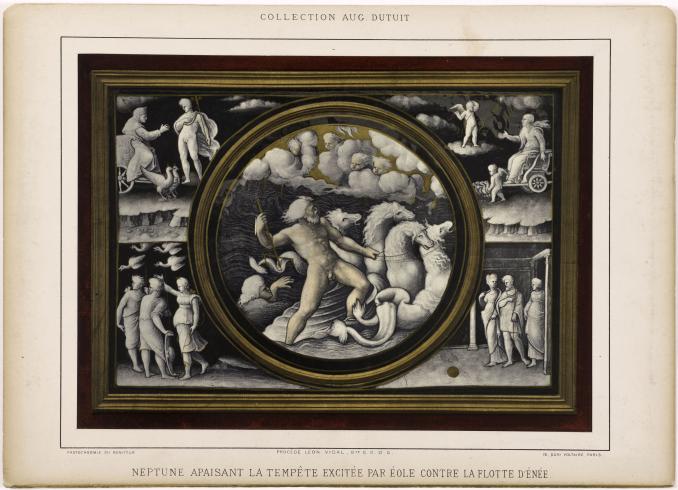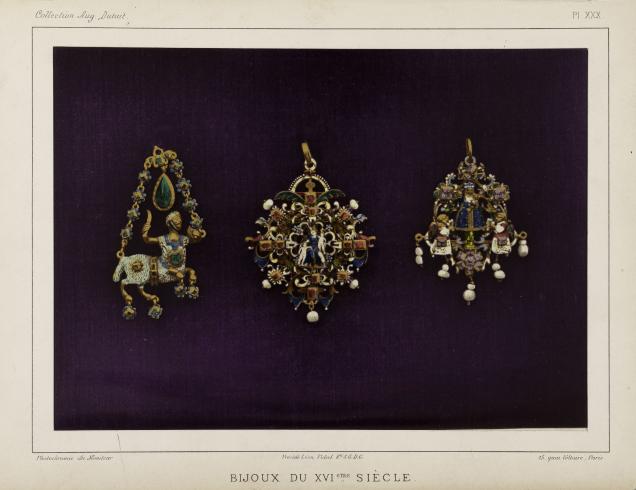These two plates reproduce works from the Petit Palais belonging to the Dutuit collection. The images were obtained using the photochromy process.
In the recent catalogue Photochromie. Voyage en couleur, 1876-1914 [Photochromy. A Journey in Colour, 1876-1914], Sabine Arqué describes this complex process: “ […] photochromes are mass-produced colorized lithographic proofs obtained from a black and white photographic negative […].
Léon Vidal filed a patent for the invention of the photochromy technique in 1872. Photochromies were successful, especially for reproductions of works of art. The effect is quite characteristic: the way in which the image is printed gives the impression of relief to the photograph, as well as bright colours which appealed to enthusiasts. In 1872, Léon Vidal embarked on the huge project of using photochromy to reproduce exhaustively the major works of art in French collections. The luxurious book was called Trésor artistique de la France, but never progressed beyond volume II.
Auguste Dutuit, an occasional photographer, paid close attention to the dissemination of his work and was enthusiastic about the most up-to-date techniques such as chromolithography. The works reproduced in these two plates were probably part of a much larger collection. Could they have been plates from the Trésor artistique de la France? Or plates commissioned directly by Auguste Dutuit to enhance his collection?
S. G. C.

City of Paris municipal collection's website
The collections portal can be used to search the collections of Paris’s 14 municipal museums (approximately 336,000 works, including 43,000 belonging to the Petit Palais).
It is also possible to download around 12,000 images of the museum’s works free of charge.
Access the Museums of the City of Paris collections portal
Extern databases
Discover a selection of databases online presenting works from the Petit Palais or documents concerning the history of the museum.


